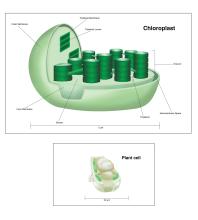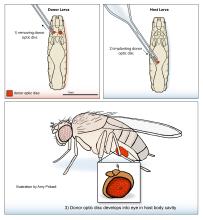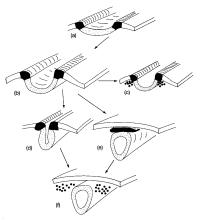Filter my results


Y-chromosomes exist in the body cells of many kinds of male animals.
Y ChromosomeX chromosomeSex ChromosomesChromosomesSex Chromatin
Mitochondria are organelles found in the cytoplasm of eukaryotic cells. They are composed of an outer membrane and an inner membrane.
Cell organellesMitochondriaEukaryotic cellsMitochondrionOrganelles
Chloroplasts are the organelles in plant and algal cells that conduct photosynthesis.
ChloroplastsPlastidsChloroplast membranesThylakoidsChlorophyll
This illustration shows George Beadle and Edward Tatum's experiments with Neurospora crassa that indicated that single genes produce singl
Neurospora crassaMicrobiologyX-raysGeneticsEnzymes
This diagram shows the life cycle of Neurospora crassa, a mold that grows on bread. N.
Neurospora crassaMicrobiologyMicroscopyGrowthdevelopment
Between 1934 and 1945, George Beadle developed a hypothesis that each gene within the chromosomes of organisms each produced one enzyme.
CellsGeneticsEnzymesGenesAmino Acids
In 1935, George Beadle and Boris Ephrussi developed a technique to transplant optic discs between fruit fly larvae.
Fruit-fliesImaginal DisksGeneticsdevelopmentMetamorphosis, Biological
Neurospora crassa is a red mold that scientists use to study genetics. N.
Neurospora crassaMicrobiologyMicroscopyCulture MediaMolds
In the 1930s, George Beadle and Boris Ephrussi discovered factors that affect eye colors in developing fruit flies.
Fruit-fliesImaginal DisksGeneticsdevelopmentMetamorphosis, Biological
This diagram shows how NCCs migrate differently in rats, birds and amphibians.
Neural CrestEmbryosVertebratesGerm LayersEctoderm